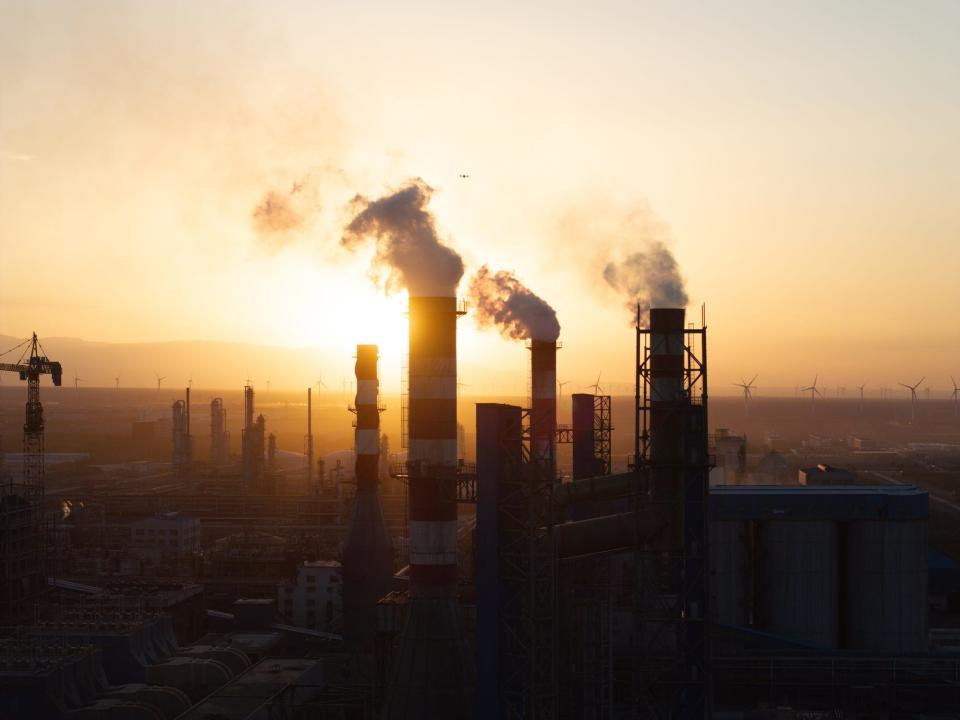A new carbon removal plant will absorb carbon dioxide 99,000 times faster than Earth's oceans
The carbon dioxide removal company Equatic has begun designing its largest plant yet.
The project will be North America's first commercial-scale CDR plant, scheduled to go online by 2027.
Many questions remain over CDR's environmental and economic impact.
The oceans are our planet's largest carbon sink, naturally absorbing about 25% of the carbon dioxide that humans emit. Carbon dioxide removal (CDR) companies like Equatic are trying to harness that natural process to absorb even more.
"We take what the ocean does already and amplify that," Edward Sanders, COO at Equatic, told Business Insider.
On June 18, Equatic announced it started engineering designs for the world's first commercial-scale, ocean-based CDR plant, Sanders said. The plant could remove carbon dioxide at a rate that's 99,000 times as fast as the oceans.
Equatic is one of about a dozen marine CDR companies that have sprouted in recent years in an effort to accelerate the ocean's natural capacity to absorb more CO2. A report from the National Academies of Science, Engineering, and Medicine estimates that marine CDR could remove billions of tons of CO2 from the atmosphere.
The technology is still in its infancy and it's unclear what the environmental impacts will be — especially at a large scale. But CDR is a necessary step in mitigating climate change; reducing greenhouse gas emissions is no longer enough to limit global warming to 1.5 °C to 2 °C by the end of the century, according to the Intergovernmental Panel on Climate Change.
How Equatic is sucking CO2 from the air

There are a lot of different ways to absorb CO2 from the atmosphere. Equatic's technology, for example, uses something called seawater electrolysis. It takes seawater and runs an electric current through it, which splits the water into hydrogen, oxygen, and two separate fluids: one acid and a base.
"The process stores carbon that was dissolved in the water as a solid, similar to the material that makes up seashells, and creates an alkaline slurry that removes carbon dioxide from the atmosphere via a cooling tower," Sanders told BI over email.
As an added bonus, the hydrogen can be converted into clean hydrogen fuel, which Equatic can either reuse to power its CDR plants or sell. Companies including Boeing and payment service provider Stripe have signed contracts with Equatic for its hydrogen.
Equatic has proven its technology can work

Equatic already has two small pilot plants to validate its technology — one in LA and a second in Singapore.
The company is also building a larger plant scheduled to go online in Singapore later in 2024, which will absorb about 4,000 metric tons of carbon dioxide annually and lay the groundwork for the company's first commercial-scale plant. That plant will launch in 2026 or 2027 in partnership with Canadian carbon removal project developer Deep Sky.
Researchers estimate that by 2050, it will cost between $230 and $540 to remove one ton of CO2 from the atmosphere. But Equatic offsets the cost of CDR by producing and selling green hydrogen. The company predicts the new plant could achieve CDR at less than $100 per ton by 2030.
Ultimately, Sanders envisions a global fleet of these CDR plants.
"Once we get to that point, we're not talking about a hundred thousand tons, we're not talking about millions of tons, we're talking about hundreds of millions of tons because this technology can be replicated in many countries," Sanders said.
Questions remain about CDR's economic and environmental impact

Since there are no commercial-scale, ocean-based CDR plants online yet, practically nothing is known about their impact on the environment and local economies.
In general, ocean-based CDR techniques manipulate seawater in ways that could potentially disrupt sea life.
"You're going to be pulling in phytoplankton and bugs and other potential living creatures from the ocean and filtering those out can have some environmental impacts," Jessica Cross, an earth scientist with the Pacific Northwest National Laboratory who specializes in CDR for the oceans, told BI.
Exactly what those impacts are depends on where a CDR operation is and what organisms are involved.
Sanders told BI that Equatic closely monitors discharge from its CDR plants to ensure they comply with legal pollution standards. Its upcoming plant in Singapore will also filter seawater to remove sea life before water enters the plant.
We can't fully rely on CDR to mitigate climate change
Because CDR is expensive and limited in scale, we can't abandon decarbonization and emissions reduction efforts, Cross said.
The benefits of this technology are "far in the future, whereas the risks of initiating this industry and this infrastructure development are local, short-term, and much more immediate," Cross said.
"Figuring out how to balance, again, this sort of diffuse global benefit with this local risk that happens, it is something that responsible researchers should be grappling with," she said.
Read the original article on Business Insider

 Yahoo News
Yahoo News 
